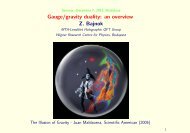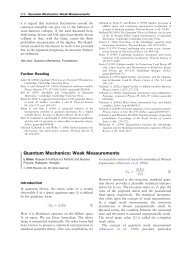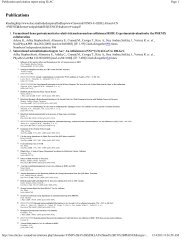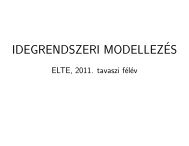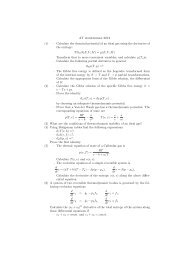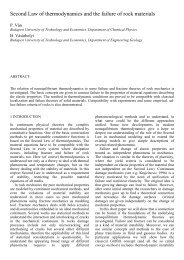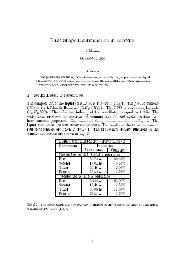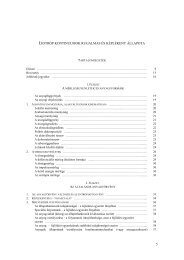Lecture Notes in Advanced Thermodynamics
Lecture Notes in Advanced Thermodynamics
Lecture Notes in Advanced Thermodynamics
Create successful ePaper yourself
Turn your PDF publications into a flip-book with our unique Google optimized e-Paper software.
2.4.2 Exam<strong>in</strong><strong>in</strong>g the constitutive equations<br />
motivation<br />
– T (e, v) and p(e, v) functions are often given as empirical approximations<br />
– it is useful to check if they fulfil the propertys of thermostatics<br />
– sometimes the propertys can be used to make restrictions to the parameters<br />
of the model<br />
Condition of the potential property of entropy<br />
– if the entropy function is twice differentiable then the mixed second<br />
partial derivatives must be equal<br />
∂ 2 s(e, v)<br />
∂v∂e<br />
= ∂2 s(e, v)<br />
∂e∂v<br />
– us<strong>in</strong>g property (B 1 ):<br />
( )<br />
∂<br />
1<br />
∂v ∣ = ∂ ( )<br />
p(e, v)<br />
e<br />
T (e, v) ∂e∣ v<br />
T (e, v)<br />
(25)<br />
– this condition is useful to check the T and p functions aga<strong>in</strong>st the (B 1 )<br />
property, without calculat<strong>in</strong>g the entropy function<br />
– if (25) is not valid, then there exists no s(e, v) function, if the condition<br />
fulfils, then s exists and the gas described by T and p functions is called<br />
entropic<br />
Condition of the <strong>in</strong>creas<strong>in</strong>g property of entropy<br />
– property (B 2 ) is simple, it requires only<br />
∂s<br />
∂e∣ > 0<br />
v<br />
– if the property (B 1 ) is substituted, a very simple condition is obta<strong>in</strong>ed:<br />
T (e, v) > 0 (26)<br />
therefore the range of the temperature function must be positive<br />
16



